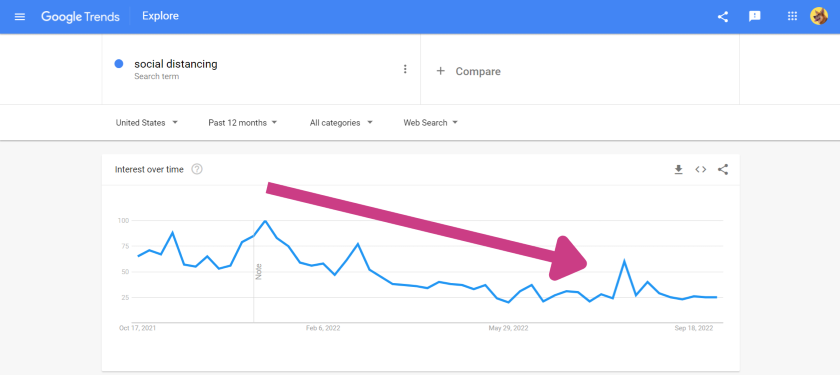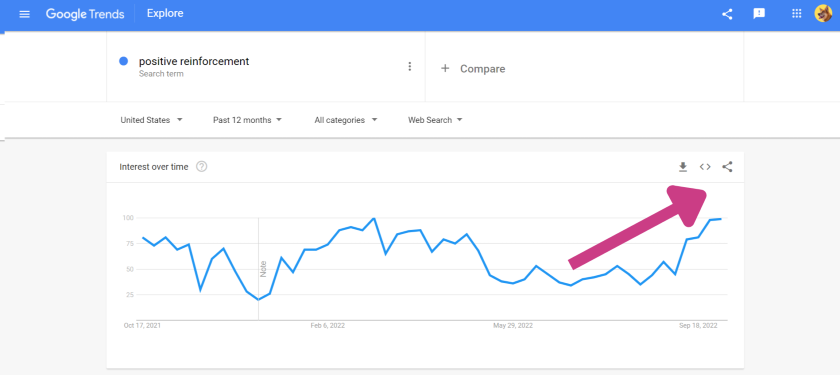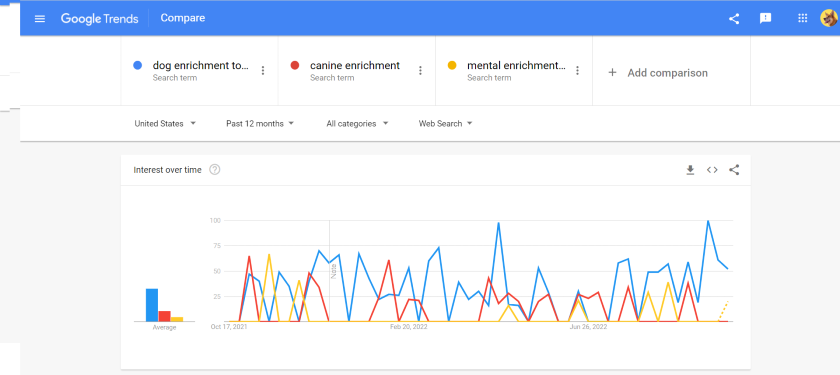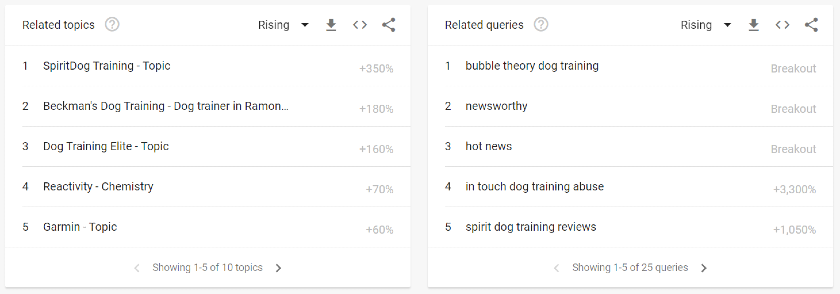How to Use Google Search Trends to Identify SEO Opportunities
There are many different tools that we use as content creators and small pet business owners to identify SEO opportunities. One free tool provided by Google that is often overlooked is Google Trends, but this is a powerful opportunity to better identify and understand search trends and how they can be used to improve your website’s search performance. To help you get started, we’re going to do a deep dive into the importance of Google search trends and some easy ways you can leverage this tool in your SEO efforts.
What Are Search Trends?
It is estimated that every day Google processes over 8.5 billion searches. These searches are your opportunity to gain traffic to your website as a small pet business owner. But, to do this, you will need to identify what exactly your audience is searching. This is more than just identifying the most popular keywords in your niche over the last year. The performance of many search queries will ebb and flow based on the season, current industry trends and developments, and more.
Google search trends refer to the way that these queries perform over time. It is the practice of identifying whether search terms are gaining search volume, losing steam in relation to how often they are being searched, or if searches for that query are largely concentrated during a specific time of year.
How Do Google Search Trends Influence Search Performance?
Identifying Google search trends can help you to plan your content strategically for its best performance. This means recognizing the best time to publish content so that it ranks and shows up in searches at the time that these queries will be most active.
Seasonal Content
One of the most popular uses of Google keyword trends is the planning of seasonal content, like holiday gift guides. While the queries leading to this content will perform well in the weeks leading up to the holidays, they will drop off after the holiday season ends.
This is one reason why we recommend the use of a content catalog for your website. Whether you are focusing on creating blog posts or releasing new products, you can use this tool to publish this content at the ideal time. You want to give Google and other search engines the time that they need to index your content and deliver it in their search results to your potential website visitors and customers.
Growing or Fading Trends
Another way that trending searches on Google can help you to plan your content is by recognizing when a new trend is up and coming versus when a trend is starting to wind down and fade out.
We see many trending topics come and go in the world of content creation. But it’s not always obvious whether the trend that we’re seeing is still picking up steam or if we missed the window of opportunity. Using tools like Google Trends, you can spot whether the number of searches is continuing to grow from day to day or if this was trending on Google, but fewer people are searching for these queries than there were just a week ago.
For example, in this screenshot from Google Trends, you can see that the term “social distancing” is trending downward. While this trend is fairly obvious given global events, not every fading trend is that easy to recognize without the aid of tools like this.
On the other hand, you can see that “positive reinforcement” is a search trend that is gaining in popularity in the United States in recent weeks. This means that content made to perform in searches for this term will likely receive more traffic than it would have just a few months ago.
How to Identify Trending Searches on Google
Identifying Google search trends is an important part of your overall keyword research and SEO efforts. After you have identified several keywords that you are considering targeting on your blog or website using either paid or free keyword research tools, try searching these terms in Google Trends.
You can narrow your search based on a specific location or period of time, depending on what you are most interested in. Additionally, you can search and compare multiple terms to identify which term(s) offers the best opportunity.
In this screenshot, you can see a comparison between three similar search queries:
- dog enrichment toys (blue)
- canine enrichment (red)
- mental enrichment for dogs (yellow)
Not only is this a great way to identify search trends for new content that you are creating but it can also be used to reassess and potentially update keywords on your older content. This will allow you to improve search performance while staying true to the original topic.
Two other great options made available by Google Trends are the lists of “Related Topics” and “Related Queries” available under the chart we have previously shared. These are search terms and topics that are currently performing in Google searches. In addition to listing the topics and queries, Google also includes the % search volume increase that each of these is currently experiencing.
If you see a topic or query that says “Breakout” instead of identifying a percentage, this means that the search volume increase has exceeded 5000%.
The following screenshot shows the “Related Topics” and “Related Queries” after searching “dog training” in Google Trends.
This is a great way to locate additional keywords to include in your content, as well as to identify new topics to cover in your content based on topics and queries that are most searched on Google today. You can then take these ideas back to your other keyword research tools to continue building upon your SEO plan.
This is also a great opportunity for content creators and small pet business owners that are trying to identify the right search queries based on search intent. If you have recently identified that a specific query is returning a different intent than your content provides value for, you may be looking for different ways to frame the search to better target your ideal audience.
Check the “Related Topics” and “Related Queries” listed to discover what search intent they are targeting. Often these search queries are similar to one another and just the smallest change to the query is needed to meet a completely different search intent.
Do you consider Google search trends when planning your content or selecting search queries to target? We would love to hear more about your process in the comments!
About the Author: Britt Kascjak, BlogPaws Director of Content & SEO, is an award-winning freelance writer whose background in digital and social media marketing spans 15+ years. She’s been a content creator in the pet industry for 9+ years with her own blogs: Shed Happens, The Kas Pack, and Lucifer the Rescue Pup where she shares her life and outdoor adventures with her 2 dogs and 3 cats. Read more…










